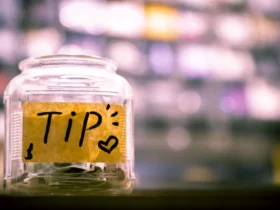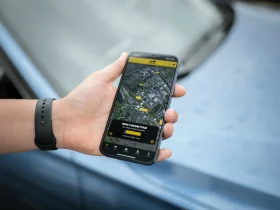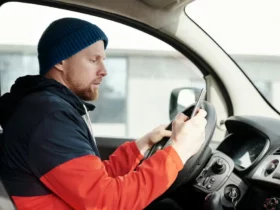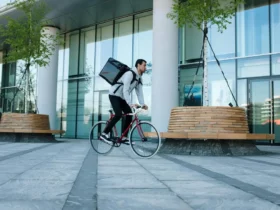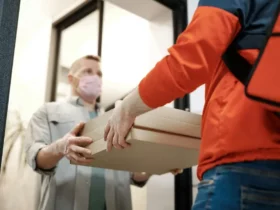Have you ever had that moment when you’re lounging on your couch, craving your favorite meal, and deciding to use GrubHub for a quick fix? It’s a lifesaver until, suddenly, the delivery is paused. It’s not just you; it happens, and it’s usually due to a hiccup at the restaurant’s end.
Maybe they’re swamped with orders, or they’ve run out of your favorite sauce. Sometimes, the drivers themselves might need to sort out an issue before they can get your meal to you. And if you’re an early bird hoping for breakfast at the crack of dawn, remember that GrubHub starts delivering when restaurants open, which might not be until 9 am or later.
Reasons Behind Grubhub Delivery Pauses
I’ve found that pauses in Grubhub delivery can happen for various reasons, and they often come down to circumstances at the restaurant or on the road. Sometimes the restaurants place the orders on hold because they’re swamped with requests or they might be running low on ingredients. In other cases, delivery might be delayed due to the logistical challenges that drivers face, such as navigating through bad weather or heavy traffic. It’s worth noting that delivery platforms sometimes have to limit services to maintain a standard of quality, ensuring that customers receive their meals hot and fresh.
High Demand and Overcapacity at Restaurants
High demand and restaurant overcapacity are among the top reasons for delivery pauses. On weekends and holidays, I see that many restaurants get a high volume of orders, both in-person and via delivery platforms like Grubhub. To sustain service quality and meet the immediate needs of dine-in customers, restaurants might pause new delivery orders. This helps them manage the rush and prioritize orders effectively. It’s a balancing act between serving those in the establishment and fulfilling online orders.
Adverse Weather Conditions and Traffic Congestion
Bad weather, like strong winds and rain, can significantly impact delivery times. Drivers often seek shelter to stay safe, which in turn means they’re unavailable to make deliveries. Traffic congestion, especially in bustling downtown areas or during events like protests where roads might be blocked, also poses a challenge. In such circumstances, reaching destinations becomes difficult, and for safety and practicality, Grubhub may pause deliveries.
Time of the Day Influencing Restaurant Availability
Lastly, the time of day plays a critical role in when Grubhub starts its delivery operations. Most restaurants open around 9 am, which means that Grubhub deliveries kick off only after establishments begin their business day. If I’m craving a meal earlier in the morning, chances are I’ll have to wait or look for a restaurant that opens earlier than usual. This timing constraint can be especially important for people looking to order breakfast or early morning snacks.
Impact of External Factors
Influence of Local Events and Traffic Situations
I’ve noticed that local events and traffic can have a considerable impact on Grubhub deliveries. It’s not just a casual observation, it’s a reality for many of us trying to grab a bite through the app. Speaking of strong winds and rain, I’ve seen quite a few delivery drivers who’d rather not risk it out there. Can’t blame them, really. Safety first, right?
Don’t get me started on collapsed streets, especially in those bustling downtown areas. Protests, for instance, can throw a real wrench in the works. Demonstrators might block roads, and suddenly, reaching your destination becomes a mini-version of “Mission Impossible.” In these chaotic moments, Grubhub delivery often hits the pause button.
Restaurant-Specific Issues
There’s more to these delivery pauses than just the weather and traffic. Restaurants have their own share of challenges. Ever placed an order just to find it on hold moments later? Well, this might be why: Restaurants run out of ingredients. It’s as simple as that. They can’t whip up your order from thin air, so they hit pause on Grubhub till they restock.
I get the frustration; you’re hungry, you want your food, and here’s an ingredient shortage throwing a spanner in the works. But think about it; maintaining quality is key. Restaurants would rather stop taking orders than serve something subpar. And honestly, I’d prefer waiting than getting a meal that doesn’t make the cut.
How Grubhub Manages Delivery Pauses
Communication with Customers
I’ve noticed that communication is key when a hiccup occurs during the ordering process. When Grubhub pauses deliveries, transparent communication is pivotal to maintaining trust. Customers are promptly informed about the situation that’s causing the delay. Grubhub uses app notifications and emails to keep everyone in the loop, ensuring that there is minimal confusion or frustration.
Notifications to Users Regarding Delivery Status
Speaking of staying in the know, Grubhub has a system of real-time notifications that updates users on their delivery status. Whether it’s a pause due to a surge in demand or a shortage of drivers, Grubhub is on top of it, sending out alerts through their app. This lets me adjust my expectations and manage my time better rather than waiting blindly for an order that’s delayed.
Options for Users When Delivery is Paused
When I’m notified of a pause in delivery, it’s not just about the problem, but also the solutions provided. Grubhub offers alternatives like opting for pickup or trying a different restaurant that’s not experiencing a delay. They also prioritize user convenience, potentially offering discounts or incentives for the inconvenience caused by the pause.
Measures for Quality Control
Grubhub doesn’t play around when it comes to the quality of food that’s being delivered. If there’s a lapse in quality control, they’d rather pause deliveries than compromise on the standard. This commitment ensures that when I do receive my order, it’s up to the mark. Strict quality checks and partnerships with restaurants affirm consistent service standards.
Steps Taken by Grubhub to Ensure Order Accuracy and Timeliness
Finally, getting the order right and on time is non-negotiable. My peace of mind comes from knowing that Grubhub takes significant steps to avoid order mishaps. From the moment a restaurant confirms an order to the second it lands at my doorstep, accuracy and timeliness are monitored. This intricate dance between Grubhub and its partners streamlines the process, ensuring every order is correct and promptly delivered, barring unforeseen pauses.
Grubhub Delivery Schedules and Availability
Grubhub’s Operational Hours
Grubhub’s delivery service operates around the clock, catering to late-night cravings and early-morning hunger pangs alike. Whether I’m up for a midnight snack or need a hearty breakfast, the platform’s delivery hours hinge on local market availability. The operative word here is availability: it’s the restaurants’ operating schedules and the presence of delivery personnel that determine when my order can be fulfilled.
Variation in Delivery Availability Based on Restaurant Hours
The hands of the clock may keep moving, but not all restaurants follow suit. Some wrap up as the day fades, while only a handful venture into the wee hours of the night. Grubhub reflects this diversity, with service times shifting to accommodate the varied hours of their associated eateries. My options are narrow as midnight approaches, a natural outcome of restaurants closing their doors for the day.
Understanding 24/7 Delivery Conditions
When I hear “24/7 delivery,” it sounds like a promise of constant access to food delivery. In practice, however, it’s a bit more complicated. This service depends on two critical factors: restaurants that keep their kitchens firing all day and night and drivers available to whisk away my order at any given hour. It’s a dynamic duo, working in tandem to bring meals to my doorstep whenever the hunger hits.
Grubhub Distance Limitations for Deliveries
I can’t talk about delivery without addressing how far Grubhub will go to deliver my food. Restaurants have a radius within which they are willing to send out their dishes, ensuring that I receive my food hot and fresh. These distance limitations are crucial; they keep operations efficient for the restaurant and satisfactory for us, the diners.
Maximum Delivery Distances and Driver Acceptance Factors
While I’d love to believe that no destination is too distant for my meal, practicality sets in with Grubhub’s delivery framework. Maximum delivery distances are in place, and drivers have the autonomy to accept or decline orders based on distance and other factors, such as the time of day or current demand. This ensures that drivers can provide timely service without overextending themselves, balancing their workload with my dining needs.
Grubhub Drivers and Delivery Pauses
Driver Options During Delivery Pauses
When I’m out on the road, and I get word that Grubhub deliveries have been paused, I’m faced with a few choices. I could head home if the pause is due to terrible weather, but if it’s a high-demand situation and I’m already within a restaurant’s vicinity, I might choose to wait it out. After all, this is when diners often rely on us the most.
Occasionally, blocked streets in downtown areas or unexpected events like protests can impede my progress. In such cases, I need to assess the situation and decide whether it’s worth the wait or if it’s best to move on to other requests.
Procedures for Drivers When Unable to Complete Delivery
Grubhub has clear protocols in place if I’m unable to complete a delivery. For starters, communication with the support team is key. If streets have collapsed or conditions are unsafe, I have to inform Grubhub right away. In doing so, they’re able to mitigate issues quickly and maintain quality service.
If a delivery is canceled and I’ve already set out, Grubhub ensures I’m compensated for my time and effort, at least partially. The exact amount depends on how far I’ve progressed towards the destination and whether I’ve already picked up the order.
Features for Drivers to Manage Availability and Breaks
Grubhub’s app offers features that let me manage my own availability – this is something I truly appreciate. If I’m feeling the need for a short break, I can toggle off my availability and take a breather. Importantly, this autonomy helps me drive safely and remain alert on the job.
Availability management also comes in handy during unforeseen personal circumstances or when I simply need some downtime. Plus, maintaining control over my schedule allows me to work at peak hours for maximum earnings or enjoy some quiet time when I know it’ll be slower.
In the fast-paced world of food delivery, staying on top of my game and making quick, informed decisions is the name of the game. By balancing personal needs with Grubhub’s effective systems, I can deliver efficiently, which is ultimately great for the customers, restaurants, and my earnings.
Resolving Issues Related to Delivery Pauses
Navigating the ebb and flow of Grubhub delivery pauses can be a breeze with a little know-how. I’ve learned that staying informed and flexible is key to dealing with these hiccups. Whether it’s choosing to wait out a pause or switching gears to another request, I’m always ready to adapt. And if a delivery can’t be completed, I know the support team’s there to help me sort things out. It’s all about finding that sweet spot between personal needs and the demands of the job. After all, keeping the balance ensures everyone—customers, restaurants, and us drivers—stays happy and satisfied. Here’s to smooth deliveries and even smoother resolutions!
FAQ – Frequently Asked Questions
What should I do if my Grubhub order is paused?
If your Grubhub order is paused, it’s best to wait for further updates from Grubhub regarding the status of your order. If the delay is significant, you may contact Grubhub customer service for more information or assistance.
How long does a Grubhub delivery pause usually last?
The duration of a delivery pause on Grubhub varies and can range from a few minutes to several hours. The length of the pause typically depends on the underlying reason, such as the time it takes for a restaurant to catch up with order volume or for weather conditions to improve.





